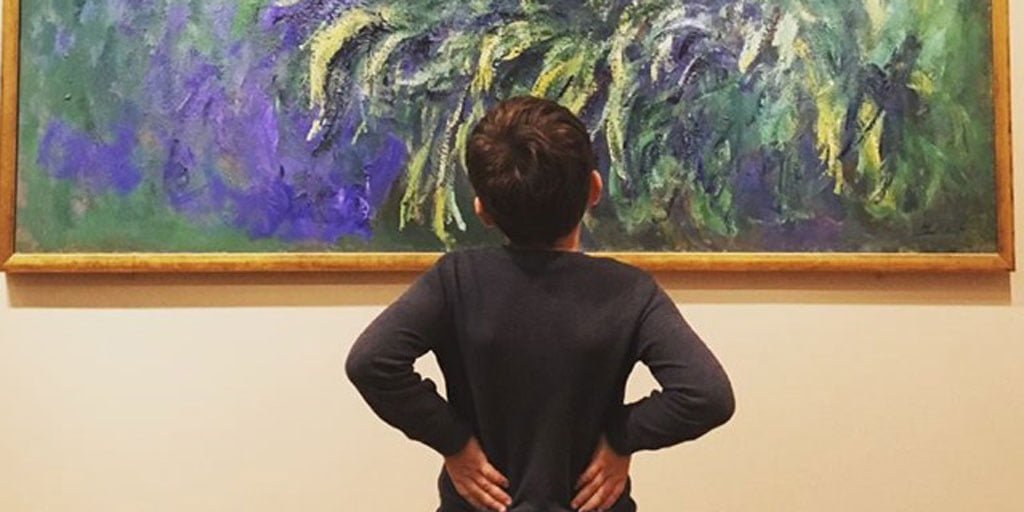60-day returns • free shipping on USA orders $129+
Picture study is a simple Charlotte Mason method, taking only a few minutes each week. Yet that practice can yield wonderful results. Lingering with one artist and allowing the students to look closely and carefully at his work—to look for themselves—is the key. When children are allowed to do that, they are free to form that oh-so-important personal relation with art.
Elsie L. witnessed the power of picture study with her son. Here is her Happy Results story.
For years we worked with the eldest of our four boys, trying to foster a love for art. Popular art curriculums, drawing programs, and visits to the museum were all met with resistance at best and indifference at worst. He had reached 8 years of age and still had no desire to look at or connect with art. I now believe this was because he had no relationship with the art beyond whatever dry facts were presented in curriculum guides.
Last year we purchased our first Art Study kit from Simply Charlotte Mason. A beautiful packet filled with the works of Claude Monet. I was cautiously optimistic. On the first day I held up the picture and asked the children to tell me what they saw. After a few minutes, I put the picture away and we moved on to something else. We repeated this several times that week until the children could tell me all about the picture with their eyes closed. My three youngest boys were as enthusiastic and eager to discuss art as ever. My eldest was watching in silence, suspicion in his eyes.
When week two rolled around and we moved on to the next picture, I heard him pipe up. “Well, that looks a lot like the first one we talked about.” We all turned to him with no small amount of surprise on our faces. “What do you mean?” I asked. He proceeded to discuss the similarities between the paintings and the connections he made in his mind. I thanked him and turned to listen to his brother when he jumped in once more, “Also the way the sun and the shadows are in this picture reminds me of the sun in my room right before dinner. It hits my Lego table that way and everything turns kind of golden. Even the color of my room changes, just like the stones on that old cathedral.” We finished art study that day and I excused myself for a moment. I ran to my room, shut the door and did a little victory dance.
We sailed through Monet and loved every moment of it. We moved on to Van Gogh. Then we took a road trip to Chicago and my eldest asked if we could go to the Art Institute of Chicago. “I want to see the real life paintings our friends Monet and Van Gogh did. I know they aren’t alive anymore, but it kind of feels like we are friends because we did so much together with them this year, you know? Kind of feels like we know them and we know the places they painted.” His request was granted. I got a little teary watching him walk into that room with wall to wall Monet paintings. He paused in front of Monet’s “Iris” and gazed at it for several minutes. He smiled up at me and said, “I like this one,” and then went on his way.
The art study kits did not make him an art aficionado, they were the tools that led us to something even better—relationship with art. A happy result indeed!
As Charlotte so aptly stated: “We cannot measure the influence that one or another artist has upon the child’s sense of beauty, upon his power of seeing, as in a picture, the common sights of life; he is enriched more than we know in having really looked at even a single picture” (Home Education, p. 309).
Podcast: Play in new window | Download


That Happy Results story was precious and yay for more new portfolios. 😀😀😀